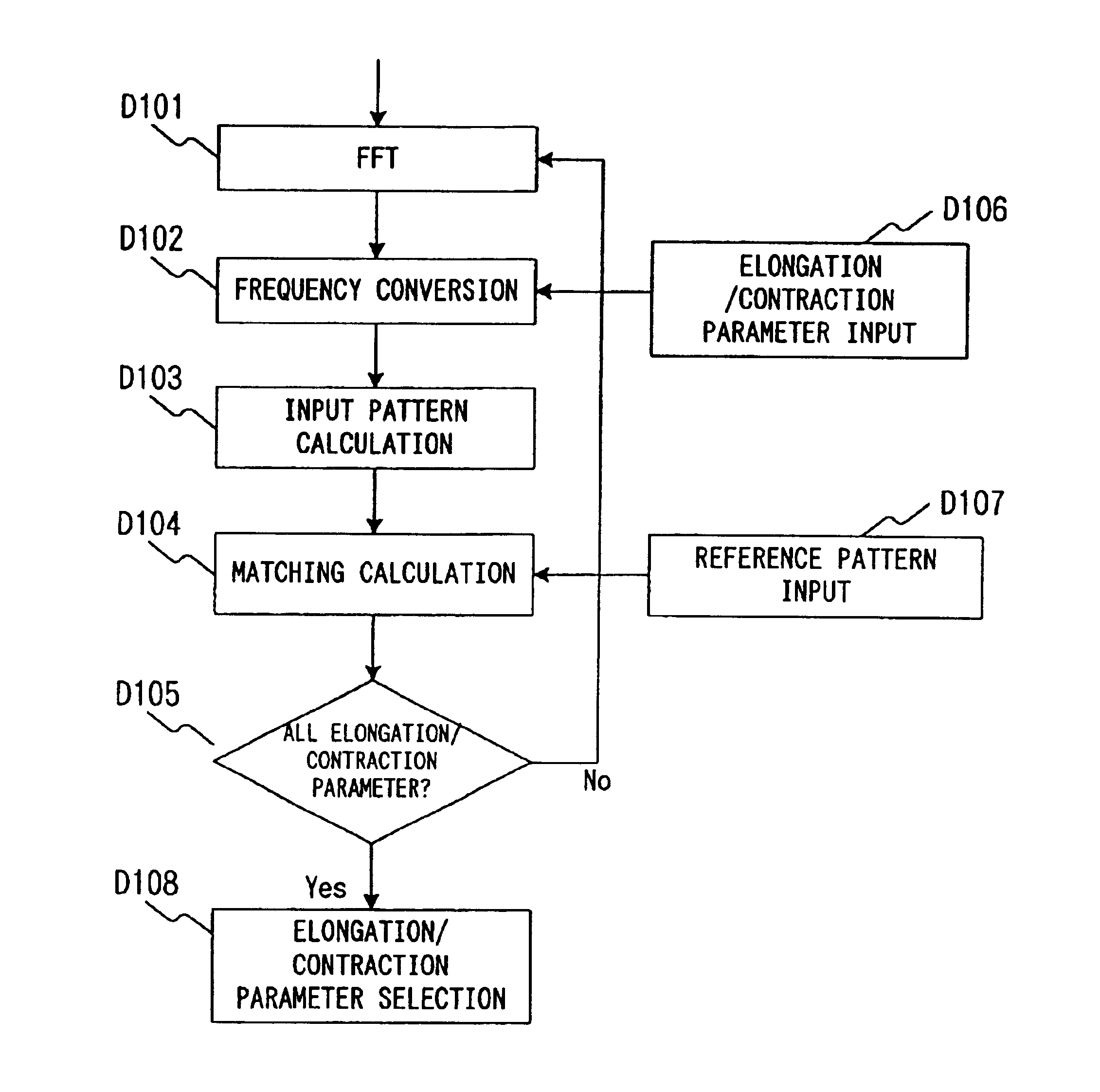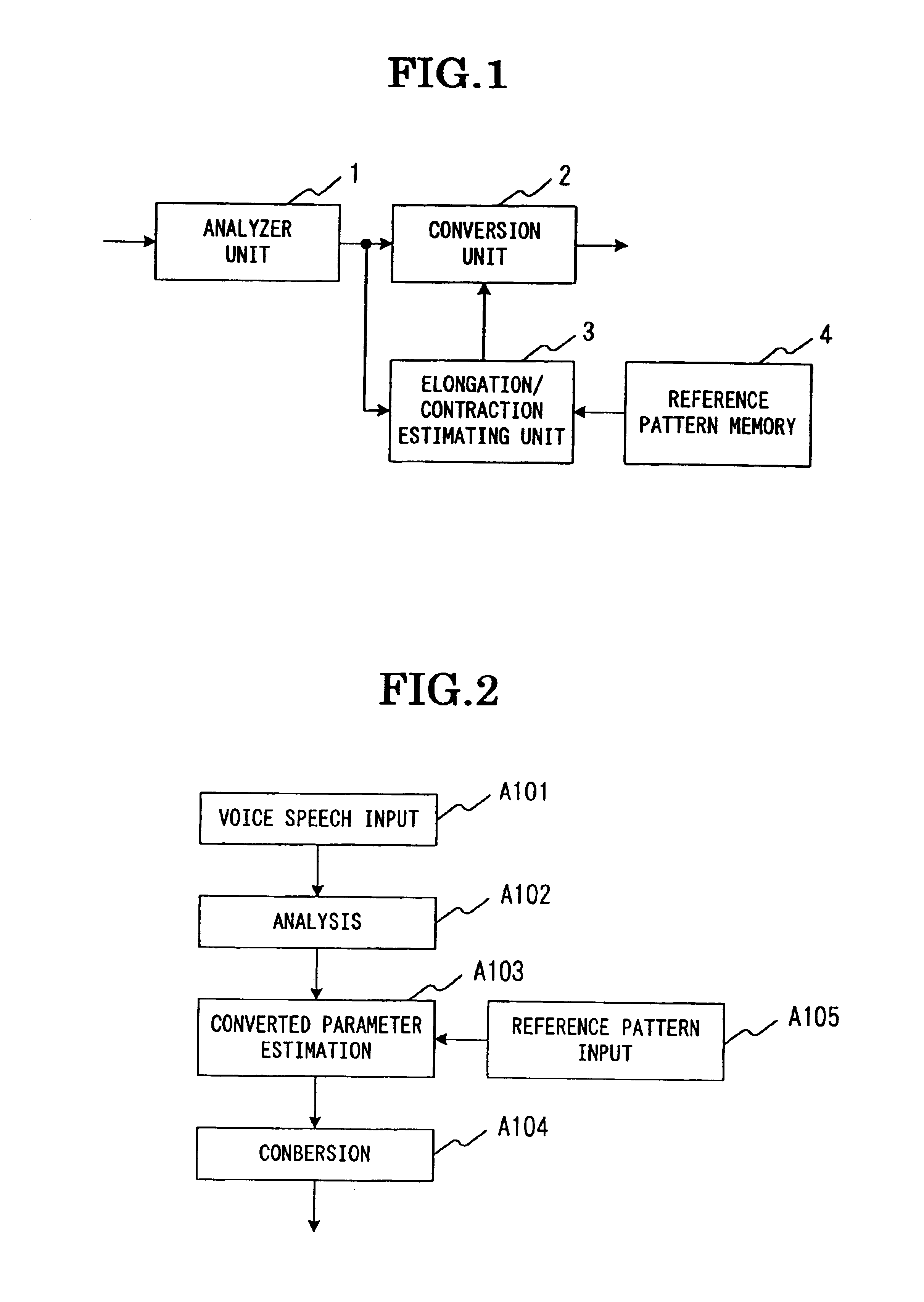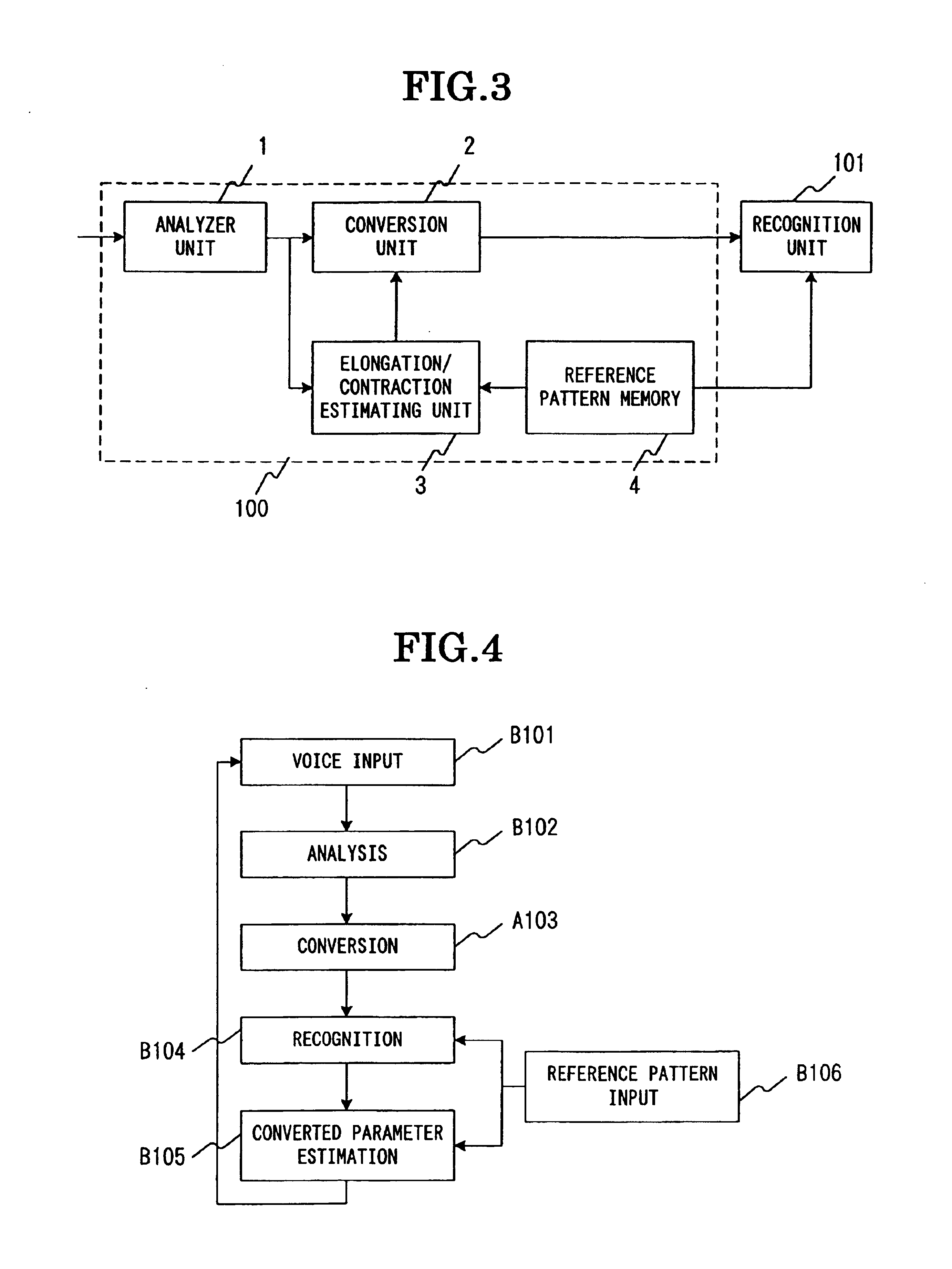Speaker's voice recognition system, method and recording medium using two dimensional frequency expansion coefficients
a technology of frequency expansion coefficient and voice recognition system, which is applied in the field of speaker's voice recognition system and method as well as acoustic model leaning method and recording medium, can solve the problems of increasing computational effort in the determination of elongation/contraction parameter value, and the inability to obtain sufficient effects of frequency elongation and contraction on the voice recognition system, so as to achieve less computational effort and improve performance.
- Summary
- Abstract
- Description
- Claims
- Application Information
AI Technical Summary
Benefits of technology
Problems solved by technology
Method used
Image
Examples
second embodiment
[0071]In addition, in the present invention the elongation / contraction parameter estimation is executed by using Formula (5) for making the HMM maximum likelihood estimation Q function minimum. Thus, the elongation / contraction parameter estimation can be obtained as continuous values, and it is thus possible to expect recognition performance improvement compared to the case of using preliminarily prepared discrete values.
[0072]A third embodiment of the present invention will now be described. FIG. 5 is a view showing the construction of the third embodiment of the present invention. Referring to FIG. 5, in the third embodiment the present invention is applied to a pattern learning system, which comprises a learning voice memory 201, a reference pattern estimation unit 202 and a likelihood judging unit 203 in addition to the spectrum converter 100 in the first embodiment.
[0073]The learning voice memory 201 stores voice signals used for learning HMM. The reference pattern estimating u...
third embodiment
[0074]While the present invention has been described in connection with the learning of HMM, the present invention is applicable to the learning of any parameter concerning voice recognition.
[0075]FIG. 6 is a flow chart for describing the process in the third embodiment of the present invention. The entire operation of the third embodiment of the present invention will now be described in detail with reference to FIGS. 5 and 6. First, a learning voice signal is inputted to the spectrum analyzer 1 in the spectrum converter 100 (step C101 in FIG. 6). The analyzer 1 analyzes the learning voice signal and feeds out an input pattern (step C102). The elongation / contraction estimating unit 3 estimates the elongation / contraction parameter (step C103). The converter 2 executes input pattern conversion and feeds out a converted input pattern (step C104). The reference pattern estimating unit 202 executes HMM estimation by using the converted input pattern and HMM (step C105). The likelihood j...
PUM
 Login to View More
Login to View More Abstract
Description
Claims
Application Information
 Login to View More
Login to View More - R&D
- Intellectual Property
- Life Sciences
- Materials
- Tech Scout
- Unparalleled Data Quality
- Higher Quality Content
- 60% Fewer Hallucinations
Browse by: Latest US Patents, China's latest patents, Technical Efficacy Thesaurus, Application Domain, Technology Topic, Popular Technical Reports.
© 2025 PatSnap. All rights reserved.Legal|Privacy policy|Modern Slavery Act Transparency Statement|Sitemap|About US| Contact US: help@patsnap.com



